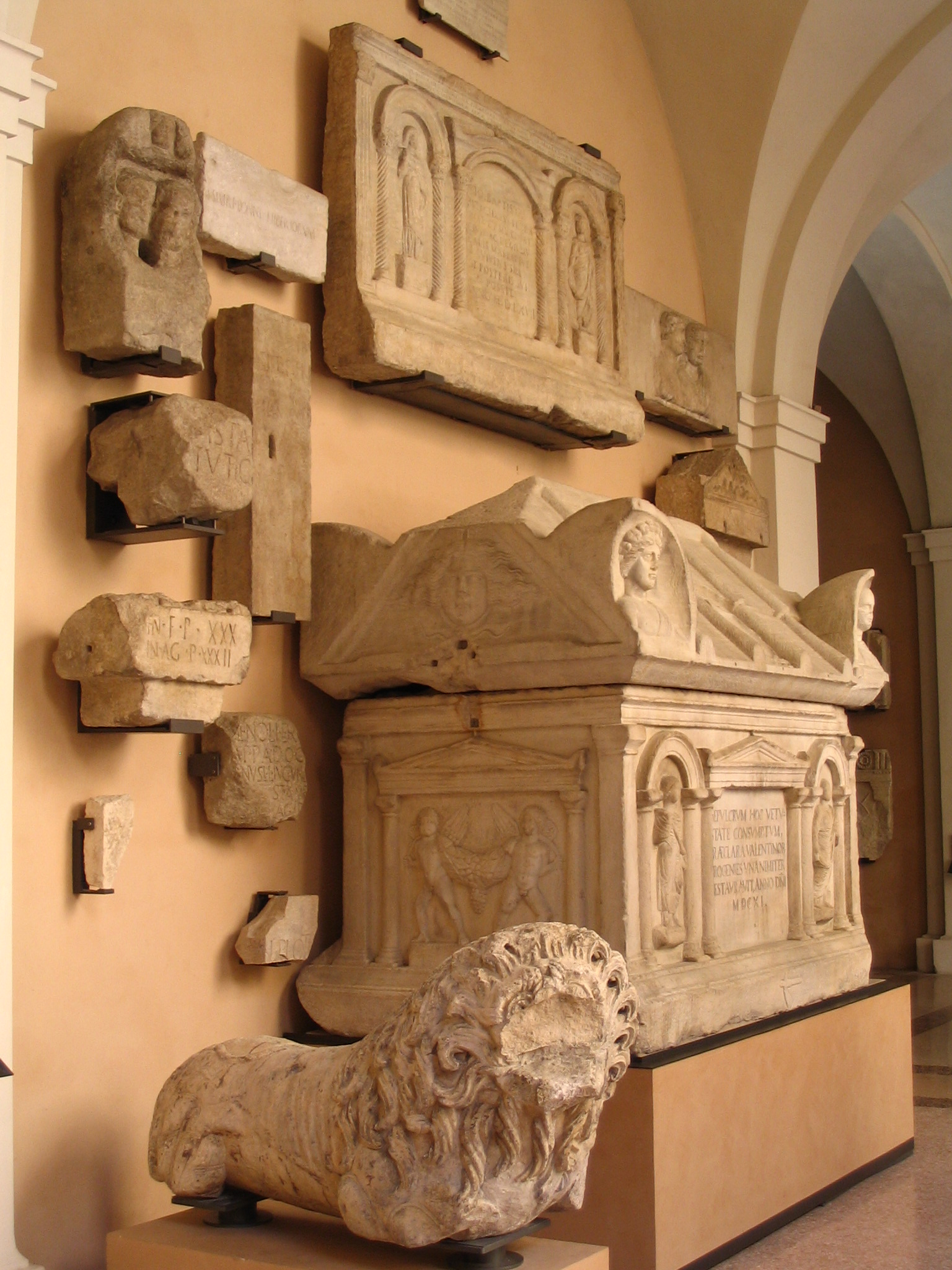Estense Lapidary Museum on:
[Wikipedia]
[Google]
[Amazon]
The Estense Lapidary Museum is a
 The museum was built around an initial nucleus of antique stone objects already present within the Estense collection, thanks to
The museum was built around an initial nucleus of antique stone objects already present within the Estense collection, thanks to

lapidarium
A lapidarium is a place where stone (Latin: ) monuments and fragments of archaeological interest are exhibited.
They can include stone epigraphy, epigraphs; statues; architectural elements such as columns, cornices, and acroterions; bas relief ...
-museum in Modena
Modena (, ; ; ; ; ) is a city and ''comune'' (municipality) on the south side of the Po Valley, in the Province of Modena, in the Emilia-Romagna region of northern Italy. It has 184,739 inhabitants as of 2025.
A town, and seat of an archbis ...
, Italy, located around the interior quadrangle of the ''Palazzo dei Musei's'' ground floor. It is owned by the province of Modena
The province of Modena () is a Provinces of Italy, province in the Emilia-Romagna region of Italy. Its capital is the city of Modena.
It has an area of and a total population of about 701,000 (2015). There are 48 ''comuni'' (: ''comune'') in th ...
and the Gallerie Estensi
The Gallerie Estensi is a network of three museums and a library, bringing together the collective fruits of artistic production from Ferrara, Modena and Sassuolo in the Emilia-Romagna region of Northern Italy. The galleries aim to preserve the his ...
. As the first public museum to be commissioned by the Duke Francesco IV d'Este upon his re-entry into Modena in 1814, it stands as a symbol of the collaboration between church, state and nobility. It also marks a new direction for the city of Modena, one recognising its rich historical identity.
History
 The museum was built around an initial nucleus of antique stone objects already present within the Estense collection, thanks to
The museum was built around an initial nucleus of antique stone objects already present within the Estense collection, thanks to Alfonso II d'Este
Alfonso II d'Este (22 November 1533 – 27 October 1597) was Duke of Ferrara from 1559 to 1597. He was a member of the House of Este.
Biography
Alfonso was the elder son of Ercole II d'Este and Renée de France, the daughter of Louis XII of F ...
's Ferrarese antique-dealer and Renaissance humanist Cardinal Rodolfo Pio da Carpi, who harboured a collection of Roman bronze coins and marble sculptures. It was later enriched with archaeological remains from the provinces of Modena
Modena (, ; ; ; ; ) is a city and ''comune'' (municipality) on the south side of the Po Valley, in the Province of Modena, in the Emilia-Romagna region of northern Italy. It has 184,739 inhabitants as of 2025.
A town, and seat of an archbis ...
and Reggio Emilia
Reggio nell'Emilia (; ), usually referred to as Reggio Emilia, or simply Reggio by its inhabitants, and known until Unification of Italy, 1861 as Reggio di Lombardia, is a city in northern Italy, in the Emilia-Romagna region. It has about 172,51 ...
.
The museum was inaugurated in 1828 by Francesco IV, with the first catalogue being written in 1830 by curator of the Museum institution Carlo Malmusi. In it, Malmusi described the museum as "a perfect testament to the Royal magnificence with which the duke's glorious ancestors used to create"C. Malmusi, in "Atti Deputazione Storia Patria Province di Modena e Parma," p. VIII, 1872, Modena.
Exhibition
The collection includes a multitude of partially and wholly complete limestone and marblestele
A stele ( ) or stela ( )The plural in English is sometimes stelai ( ) based on direct transliteration of the Greek, sometimes stelae or stelæ ( ) based on the inflection of Greek nouns in Latin, and sometimes anglicized to steles ( ) or stela ...
and reliefs. Many of the exhibits are funerary monuments, notably inscribed Roman
Roman or Romans most often refers to:
*Rome, the capital city of Italy
*Ancient Rome, Roman civilization from 8th century BC to 5th century AD
*Roman people, the people of Roman civilization
*Epistle to the Romans, shortened to Romans, a letter w ...
sarcophagi originating from Ravenna
Ravenna ( ; , also ; ) is the capital city of the Province of Ravenna, in the Emilia-Romagna region of Northern Italy. It was the capital city of the Western Roman Empire during the 5th century until its Fall of Rome, collapse in 476, after which ...
in the 2nd and 3rd centuries A.D. Many of the museum's corridors are dedicated to the local remains in and around Modena from 183 BC when it became the Roman military colony of ''Mutina.'' The collections also contain works transferred from Modena's cathedral (such as Wiligelmo's Romanesque sculptures) and neighbouring city churches, in the interest of preserving such antique works following the unification of Italy
The unification of Italy ( ), also known as the Risorgimento (; ), was the 19th century Political movement, political and social movement that in 1861 ended in the Proclamation of the Kingdom of Italy, annexation of List of historic states of ...
from 1815-1871.
See also
*Biblioteca Estense
The Biblioteca Estense (), was the family library of the marquises and dukes of the House of Este. The exact date of the library's birth is still under speculation, however it is known for certain that the library was in use during the fourteenth ...
* Pinacoteca Nazionale in Ferrara
The Pinacotecta Nazionale () is an art gallery in Ferrara, Emilia-Romagna, Italy. It is located on the ''piano nobile'' (or first floor) of the Palazzo dei Diamanti, a work of Renaissance architecture by Biagio Rossetti, commissioned by Leonello ...
* Ducal Palace of Sassuolo
Bibliography
* Nicoletta Giordani, Giovanna, Paolozzi Strozzi, ''The Estense Lapidary Museum'', Modena 2003. * Nicoletta Giordani, Giovanna, Paolozzi Strozzi (edited by) ''Museo Lapidario Estense. General catalogue'', Venice 2005.Sources